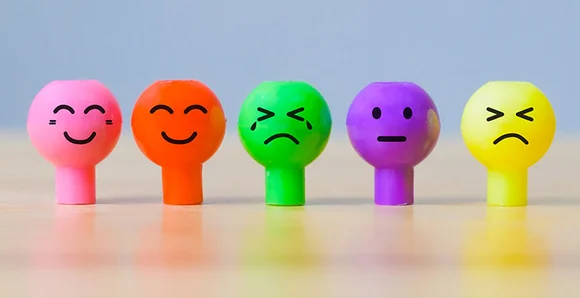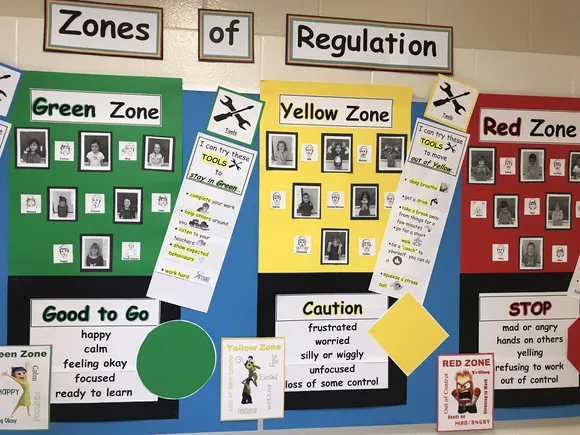.webp)
Emotional regulation is a fundamental skill for students to develop as it significantly impacts their ability to learn, socialize, and thrive in a school environment. In today’s educational landscape, where academic achievements are often prioritized, the emotional well-being of students sometimes takes a back seat. However, teaching emotional regulation is crucial for creating a balanced, supportive, and productive classroom. This blog will explore what emotional regulation is, its importance, and practical tips for teaching it to students.
What is Emotional Regulation?

Emotional regulation refers to the ability to manage and respond to one’s emotions in a healthy and productive manner. It involves recognizing emotional responses, understanding their impact, and using strategies to control them appropriately. This skill is essential for maintaining emotional stability and achieving personal and academic success. Students who master emotional regulation can navigate social interactions more effectively, cope with stress, and make better decisions.
How do We Regulate Emotions in the Classroom?
Regulating emotions in the classroom involves creating an environment that supports emotional awareness and management. Teachers can employ various strategies to help students develop these skills, such as modeling appropriate emotional responses, teaching mindfulness practices, and providing a safe space for students to express their feelings. Encouraging open discussions about emotions and using positive reinforcement can also foster an emotionally supportive classroom atmosphere.
Why is it Important to Teach Emotional Regulation?
Teaching emotional regulation is vital for several reasons.
- Improves Academic Performance: Students with strong emotional regulation skills are better equipped to focus on their studies and handle the pressures of academic life.
- Enhances Social Skills: Understanding and managing emotions helps students interact more effectively with their peers and teachers.
- Reduces Behavioral Issues: Students who can regulate their emotions are less likely to exhibit disruptive behaviors, leading to a more harmonious classroom environment.
- Promotes Mental Health: Emotional regulation is linked to better mental health outcomes, reducing the risk of anxiety, depression, and other emotional difficulties.
What’s the Best Way to Teach Emotional Regulation to Students?

The best way to teach emotional regulation to students is through a combination of direct instruction, modeling, and practice. Here are some effective strategies.
- Direct Instruction: Teach students about different emotions, how they are experienced, and ways to manage them.
- Modeling: Demonstrate appropriate emotional responses and regulation strategies in various situations.
- Practice: Provide opportunities for students to practice these skills in real-life scenarios through role-playing, group activities, and discussions.
- Feedback: Offer constructive feedback and positive reinforcement to help students refine their emotional regulation skills.
Is Emotional Regulation SEL?
Yes, emotional regulation is a critical component of Social and Emotional Learning (SEL). SEL encompasses a broad set of skills, including self-awareness, self-management, social awareness, relationship skills, and responsible decision-making. Emotional regulation is integral to SEL as it directly impacts a student’s ability to manage themselves and interact positively with others.
Ideas for Practicing Emotional Regulation in the Classroom
- Learn to Identify Emotions: Teach students to recognize and label their emotions. Use emotion charts, journals, or apps to help them track their feelings.
- Think About Emotions in Advance: Encourage students to anticipate how they might feel in certain situations and plan appropriate responses.
- Use Books to Teach Emotions: Incorporate literature that explores emotional themes. Discuss characters’ emotions and how they manage them.
- Make Sure Emotions Are a Focus in Your Classroom: Create an environment where discussing emotions is normalized and encouraged. Use morning meetings or circle time to check in on students’ emotional states.
- Integrate Emotions into Your Academics and Activities: Include emotional regulation activities in your lesson plans. For example, use writing assignments to reflect on emotional experiences or science lessons to explain the physiological aspects of emotions.
Conclusion
Emotional regulation is a vital skill that can significantly enhance students' academic and personal lives. By understanding what emotional regulation is and implementing strategies to teach it, educators can create a supportive and emotionally intelligent classroom environment. Start integrating these tips into your teaching practices today to help your students thrive emotionally and academically. For more resources and ideas on promoting emotional well-being in your classroom, subscribe to our newsletter and stay updated with the latest educational strategies.